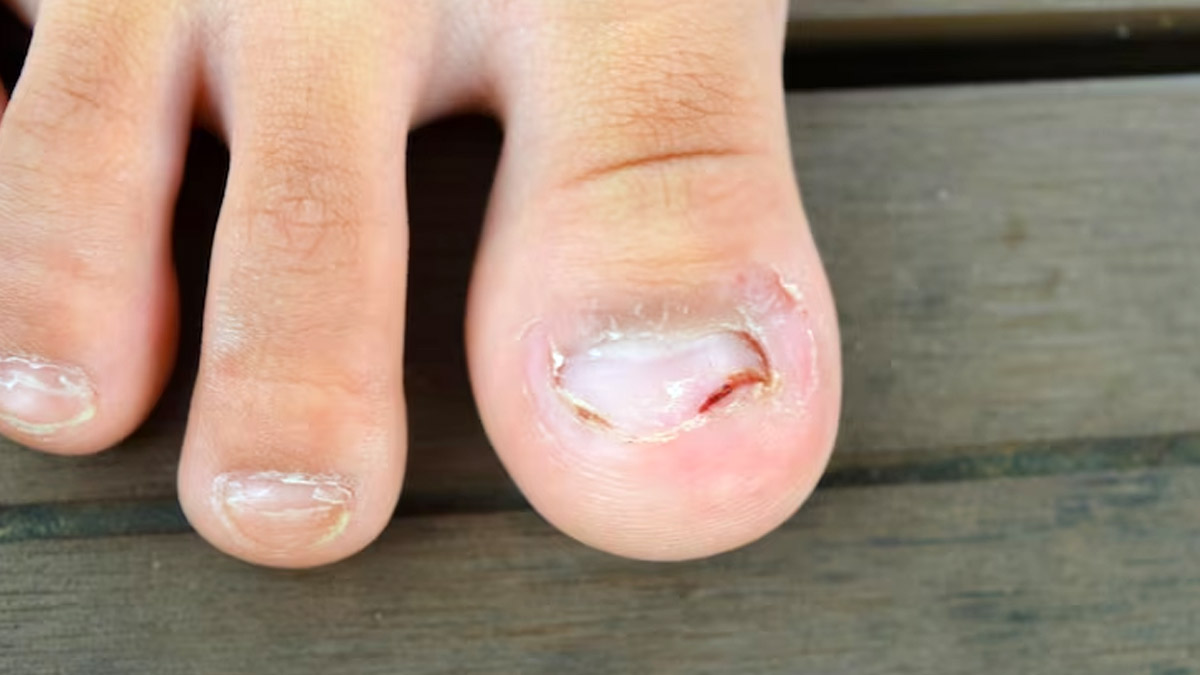
Fungi are everywhere around us, and they like an environment that is damp, moist, and warm. Your feet provide the appropriate environment where fungi can be active. Not maintaining proper feet hygiene can make you susceptible to a fungus that can affect both feet and nails. It is also likely to develop fungus in the toenail, also known as onychomycosis. Here are some habits you should follow to keep toenail fungus at bay.
Table of Content:-
How Does Fungus Develop On Toenails?
Various fungi can cause nail fungus, of which the dermatophyte is the most prevalent. Additionally, moulds, bacteria, and yeast can result in nail infections. These organisms consume keratin, a protein found in hair and nails, resulting in their green or black discolouration.

A fungal infection of the nail and a fungal infection of the foot can result in an athlete's foot. A gym shower's floor tile or the interior of a pair of black, sweaty, wet shoes are examples of places where you might come into contact with fungus and become infected.
Also Read: Scientists Discover New Genus Of Fungus For Cancer Treatment
How To Prevent Toenail Fungus
Here are five daily habits that will help you keep fungal infections away from your feet and toes.
Trim Nails Properly

Nail and foot hygiene is important in preventing the buildup of toenail fungus. Wash your feet regularly and keep your toenails clean and dry. Properly trimming nails is essential to curtail the buildup of fungus. Use nail clippers or scissors thoroughly cleaned to trim your toenails, and always cut them crosswise. If necessary, lightly file any sharp edges using a nail file.
Wear Breathable Footwear That Fits Well
Choose shoes in which your feet fit properly. Avoid both oversized and undersized shoes. Make sure that your shoes are not touching your toenails, which is a common case while wearing undersized shoes. Also, ensure to use shoes in which your feet do not slide back and forth, which is common in oversized shoes.

Choose shoes made of breathable material like canvas, implying that air can circulate around the feet. This will keep the feet dry and less prone to fungal attacks.
Frequently Change Shoes
Using sweaty shoes increase the prevalence of fungus on your feet and toenail. Allow some time so that they can properly get dry for your next use. Thus, altering between two pairs of shoes is one way to prevent the onset of toenail fungus.

Also Read: 6 Myths About Fatality Of Black Fungus, Here Are Real Facts Which You Must Know
If you do not have an extra pair of shoes, consider buying one, keeping in mind they are true to your size and are made of breathable material. To add an extra layer of protection, you can also use antifungal spray or powders to eliminate the fungus.
Change Your Socks Daily
Similarly, your socks should be changed daily, and when it comes to their material, make sure you buy a pair made of breathable material, just like your shoes. Importantly, remember to wash them before you use them the next time.
Avoid Barefoot At Public Places
Another way to keep toenail fungus at bay is to ensure you do not go barefoot in public places like pools or showers. In this kind of moist place, choose to wear sandals or footwear that best suits the environment.
Takeaway
When toenail fungus becomes severe, it can get uncomfortable and harm the nails. Additionally, if you have an immune system which is compromised as a result of medicine, diabetes, or another illness, it might result in severe infections that travel beyond your feet. Thus, if your toenails are safe from fungal infection, follow these habits to prevent it, and if they have developed the infection, seek a doctor's assistance to get its treatment.
Image Credits: freepik
Also watch this video
How we keep this article up to date:
We work with experts and keep a close eye on the latest in health and wellness. Whenever there is a new research or helpful information, we update our articles with accurate and useful advice.
Current Version